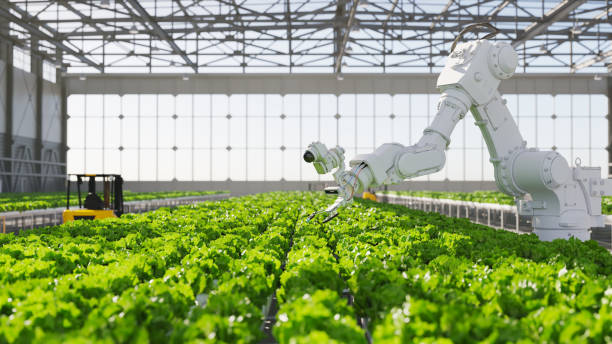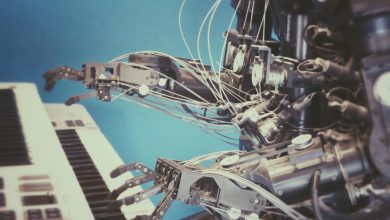
The global population could reach 9.7 billion people by 2050, leading some estimates to suggest that global food production would need to grow by 70% in the next few decades.
Around 733 million people faced hunger in 2023, equivalent to one in eleven people globally and one in five in Africa, according to the latest State of Food Security and Nutrition in the World (SOFI) report.
Agriculture is vital
Global action for better agriculture not only aims to alleviate the burden of hunger and malnutrition, but also to ensure sustainable economic and social progress.
Almost half the world’s population lives in households linked to agrifood systems. In low and and middle-income countries, agriculture contributes 20% or more to national GDP (World Bank, 2020). Yet, over 400 million small-scale farmers live in poverty.
At least seven of the seventeen United Nations Sustainable Development Goals are linked to agricultural activity: SDG 1 (no poverty); SDG 2 (zero hunger); SDG 8 (decent work and economic growth); SDG 12 (responsible consumption and production); SDG 13 (climate action); SDG 14 (aquatic life); and SDG 15 (life on land).
Agriculture also impacts global health, with food quality being a risk factor for disease. Gender equality can benefit from agriculture’s potential to increase access to resources and employment. Thriving agriculture can also drive local infrastructure development.
Towards digital agriculture
Fortunately, digital technologies have great potential to help us improve the management of agricultural production processes and achieve food security.
This potential has made “digital agriculture” a key priority for ITU and the UN Food and Agriculture Organization (FAO) and we have laid the groundwork for new international standards with our Focus Group on Artificial Intelligence (AI) and Internet of Things (IoT) for Digital Agriculture.
Digital agriculture encompasses a wide range of technologies in areas like AI, IoT, digital twin, drones, distributed ledger technologies, and robotics. Technical standards are needed to enable interoperability, data compatibility, and security across different systems.
Open to all interested experts, the Focus Group concluded its work in June with the delivery of terminology, a standardization roadmap, analyses of agri-tech use cases, and guidance on ethics as well as data collection and modelling.
- Glossary providing precise definitions for shared understanding of terms relevant to digital agriculture, an essential foundation for further research and standardization.
- Standards roadmap consolidating existing international standards, identifying needs for new standards, and highlighting associated technologies and agricultural applications.
- Report on the ethical, legal, and regulatory considerations for data privacy, transparency, and fairness in AI systems for agriculture, predicated on the European Union’s AI Act, the Rome Call for AI Ethics, and the UN Resolution on AI.
- Report on tech use cases for optimizing farming practices, crop management, and resource use and sustainability.
- Report on the use of sensors, drones, and other smart farming equipment to gather data for real-time analysis by AI algorithms for more precise agricultural practices
Introducing AI
So how, in real terms, can AI help optimize agriculture?
AI systems can support farmers in monitoring the condition of their crops, soil, and livestock. Analysing images or data from field sensors, AI algorithms can help determine the best time to sow seeds, collect fruits, and spread fertilizers. AI systems can detect pests by examining images taken by drones, agricultural robots, or farmers using simple phone cameras. They can also identify abnormal livestock behaviour for sick animals to receive treatment before it becomes too late.
These examples of “precision farming” show how new technologies can support more efficient and sustainable use of resources.
With better weather forecasting and predictive analytics for potential yield size and quality using field data or plant images, farmers can improve their understanding of their potential revenues and how much to sell or save for personal consumption. AI systems can also be used to analyse consumption patterns to predict demand for a particular agricultural product, helping farmers to avoid shortages or oversupply.
The list goes on and on.
AI systems can be deployed on robotic platforms to direct and control their work performing assistive tasks, such as targeted irrigation, application of fertilizers and pesticides, collection of fruits, or transporting equipment around a farm.
AI tools for evaluating creditworthiness in new ways can help small-scale farmers to access finance and insurance. AI can help track agricultural production, product quality, and food distribution. It could also support responsible conduct and practices along food supply chains.
Analysts already predict that use of AI in the agriculture industry could grow from USD 1.7 billion in 2023 to USD 4.7 billion in 2028.
ITU and FAO are working together to create global access to the knowledge and technological capabilities essential to digital agriculture.
Our goal to bring the benefits of digital agriculture to everyone around the world comes with significant challenges in areas ranging from education and awareness to financial means and the availability historical data.
Our global communities are working together to devise solutions, drive associated collaboration, and build the necessary bridges between different areas of expertise.
I welcome you to join us.




